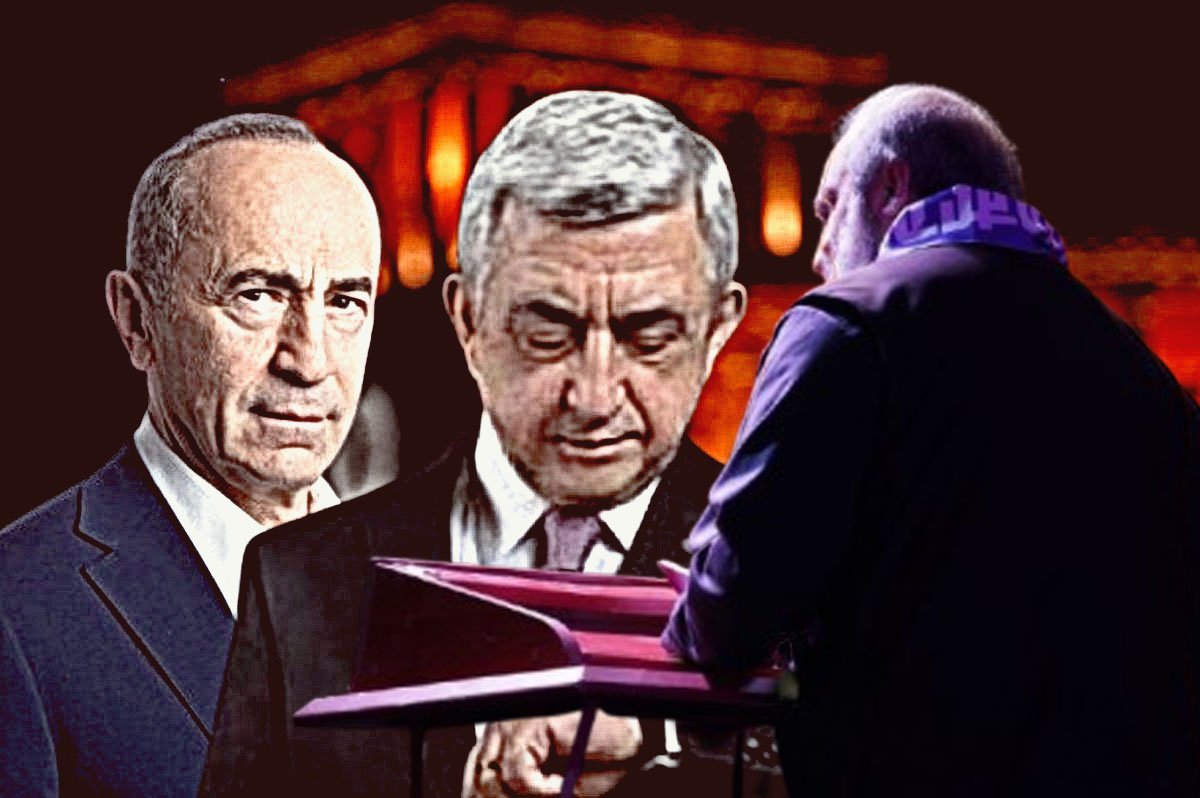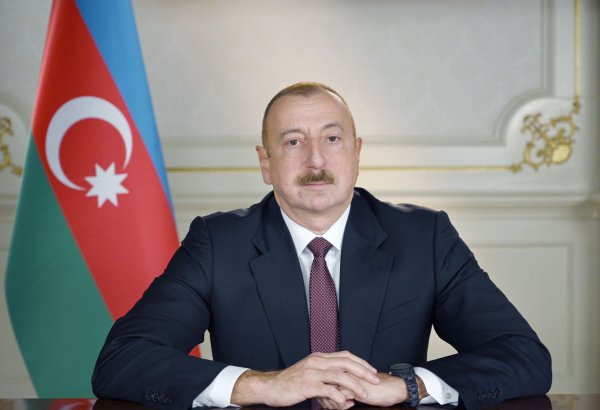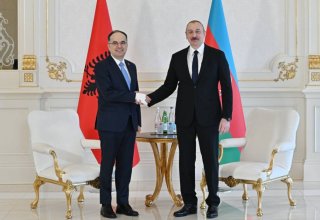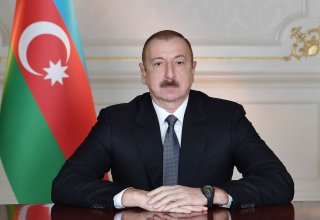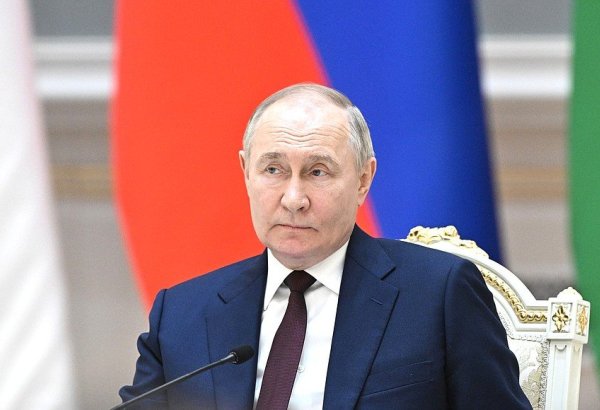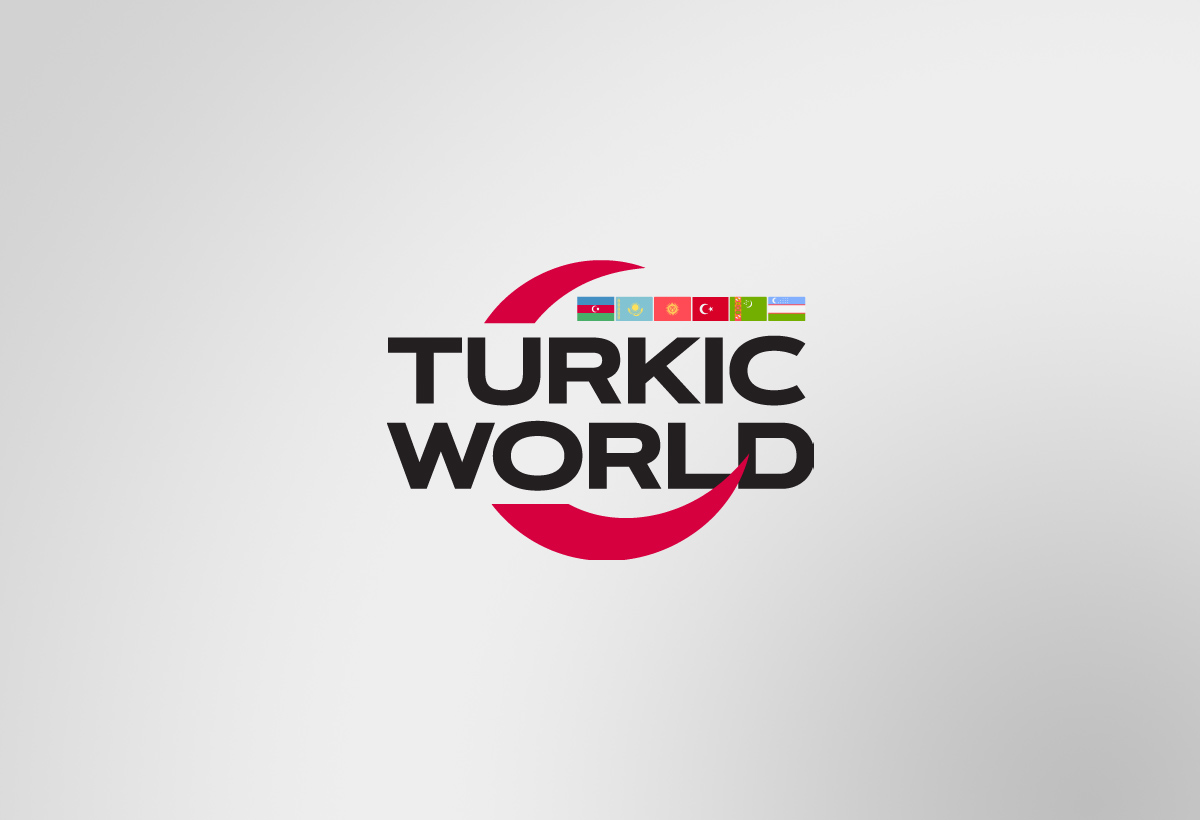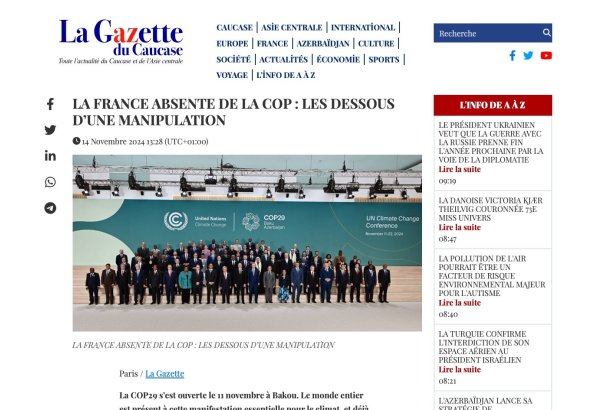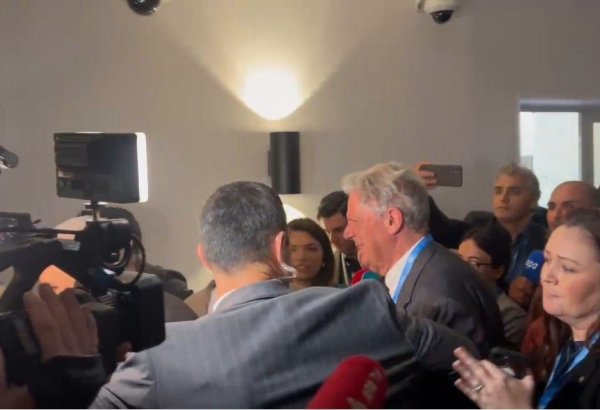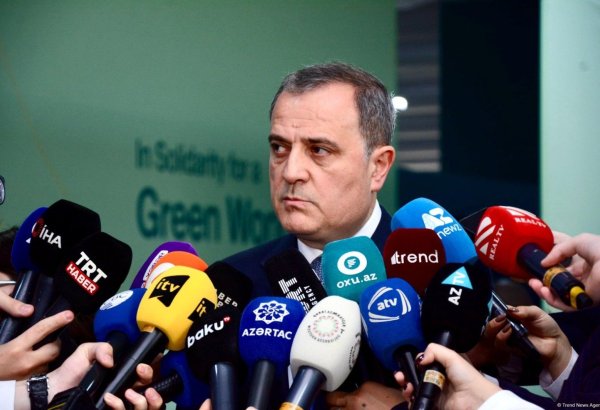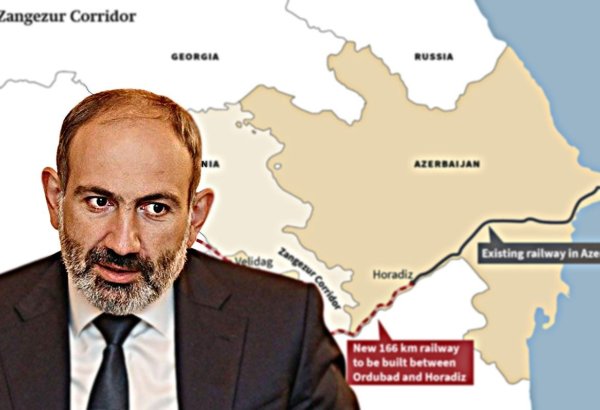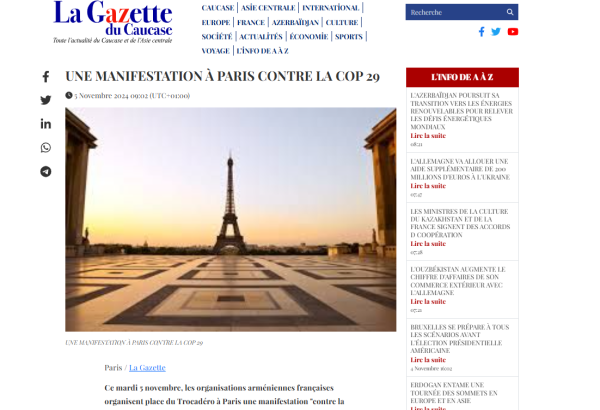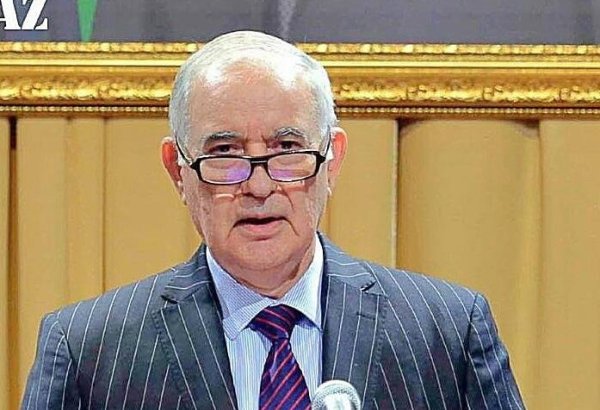BAKU, Azerbaijan, October 7. / Bakunetwork / As autumn settles over Armenia, the opposition has once again come to life, though this revival seems devoid of any real momentum. Opposition supporters, vocal in their protests against Prime Minister Nikol Pashinyan, organized a rally in the heart of Yerevan. It provided a rare platform for their leader, "Priest Bagrat" (Vazgen Galstanyan), to deliver his message on Armenian Public Television—a rare opportunity for the opposition to air its grievances to a broader audience.
Yet, yesterday's protest served only to underline the opposition's waning influence. The event fell short of expectations, lacking both scale and enthusiasm. With such lackluster mobilization, a critical question looms: can Galstanyan, with his limited political capital, forge a strategy capable of mounting a credible challenge to Pashinyan's government?
Kocharyan and Sargsyan: Haunting Shadows of the Past
Political analysts have long observed the continued influence of Armenia's former presidents, Robert Kocharyan and Serzh Sargsyan, on the opposition, including those rallying behind Galstanyan. Yet instead of bolstering the opposition, their involvement has cast a long shadow over it. For many Armenians, these figures represent a tainted legacy, and the mere mention of their names stirs enough resentment that even those disillusioned with Pashinyan lean toward supporting the current administration. Kocharyan and Sargsyan, once seen as architects of Armenia's political system, are now viewed as relics of a corrupt past—antiheroes whose presence tarnishes any protest movement they are associated with.
A Spring of Failures and Missed Chances
Earlier this year, Archbishop Bagrat of the Tavush Diocese attempted to ignite mass protests by exploiting Armenia’s border delimitation and demarcation process with Azerbaijan—a politically charged issue. His campaign mimicked Pashinyan’s own playbook, the same one that six years earlier had fueled the "Velvet Revolution," bringing Pashinyan to power. But history, it seems, did not repeat itself. Despite early signs of momentum, with thousands poised to join, the movement quickly lost steam upon reaching Yerevan. Unlike Pashinyan in 2018, Galstanyan was unable to provide the public with a coherent action plan or a convincing strategy to navigate Armenia through its current crisis.
The gap between Galstanyan’s religious appeal and his lack of political substance is clear. While Pashinyan capitalized on a wave of public discontent with a concrete vision for Armenia’s future, Galstanyan's efforts are seen as hollow. His rhetoric, lacking in both clarity and urgency, failed to energize the opposition and has left many questioning whether he possesses the leadership needed to carry the movement forward.
In the absence of fresh ideas and credible leaders, Armenia's opposition appears stuck in a cycle of missed opportunities and internal discord, haunted by the ghosts of past regimes. Without significant change, the opposition's prospects of challenging Pashinyan appear dim—another chapter in Armenia’s long, drawn-out political drama.
Autumn Campaign Failures
Following the failed spring protests, Priest Bagrat spent the summer attempting to regroup in Armenia’s regions, hoping to reignite demonstrations in the fall. Yet his first autumn rally made one thing clear: Galstanyan has been unable to muster the public support even at the levels seen earlier in the year. Only 3,000 to 4,000 people responded to his call in Yerevan—a meager turnout for a country where social discontent appears to be simmering just beneath the surface.
Galstanyan – A Leader Without a Future?
Galstanyan’s shortcomings highlight a broader issue within Armenia’s opposition: a glaring absence of fresh leadership, innovative ideas, and strategic clarity. In a political climate where much of the population has grown weary of the old elites and their return is viewed with skepticism, any opposition that relies on figures from the past seems destined to fail.
Despite ongoing geopolitical uncertainty, Armenia has enjoyed a degree of economic stability. The country’s lack of charismatic opposition leaders, capable of offering a credible alternative, has made the autumn protests appear as just another chapter in the drawn-out saga of Armenian politics—a theater where the shadows of past failures continue to obstruct any real hope for change.
Russian media has reported that the Armenian opposition’s autumn efforts have once again fallen flat, despite seemingly favorable conditions. According to various polls, Pashinyan’s approval ratings are at historic lows. One poll indicates that only 8% of the population supports him, while 75% express harsh disapproval of his government, with 67% doubting its ability to secure a peace agreement that benefits Armenia.
However, the critical question remains: can the opposition leverage this widespread disillusionment? The central problem for Pashinyan’s opponents lies in the absence of a clear and compelling motive for protests. The spring demonstrations were sparked by Armenia’s return of four villages to Azerbaijan during the border delimitation process—a move that stoked anxiety in border regions and ignited unrest. By autumn, the opposition could not rally around a cause of comparable significance.
The Opposition's Lack of a Plan
A second issue plaguing the opposition is the lack of a coherent action plan. Galstanyan and his allies persist in their critique of Pashinyan’s policies, but they offer no viable alternatives. To complicate matters, their positions are often contradictory. During his recent appearance on Armenian Public Television, Galstanyan repeatedly labeled Pashinyan as “evil,” calling for his immediate resignation. Yet when pressed on critical matters—such as a peace deal with Azerbaijan and Armenia’s future relations with Russia—he failed to offer concrete answers.
An Economy That Grows Despite the Odds
A third challenge is Armenia’s resilient economy, which continues to grow despite both internal strife and external pressures. Armenia’s increasing role as a transit corridor for Russia, which seeks to circumvent international sanctions, has bolstered economic growth. In the first eight months of 2024, Armenia’s GDP grew by 9%, with foreign trade turnover doubling to $22.5 billion. The driving force behind this surge has been the rise in parallel imports from Armenia to Russia. With economic stability offering a sense of security, the public’s appetite for protests has waned.
Low Prospects for the Opposition
At this point, the chances of the Armenian opposition making any significant headway appear exceedingly slim. The protests, which in the spring drew tens of thousands of participants, have sharply diminished by autumn. There is little reason to believe that this latest wave of demonstrations will succeed. Even during the snap parliamentary elections following the Second Karabakh War, when Pashinyan’s ratings were at a low, his party still managed to win the majority of votes and remain in power.
Armenian political analyst Arshaluis Mgdesyan notes that while the public may be disillusioned with Pashinyan’s government, the opposition has failed to establish a meaningful connection with the people. “Bagrat Galstanyan and his supporters face several serious challenges,” Mgdesyan observes. “First, their association with former presidents Serzh Sargsyan and Robert Kocharyan creates distrust. Second, they have failed to provide answers to key questions: How will relations with Azerbaijan evolve? How will the country’s security be ensured? And how will the process of border delimitation and demarcation proceed?”
Without addressing these fundamental issues, the opposition risks remaining adrift, disconnected from the very population it seeks to represent.
According to Mgdesyan, Armenia’s Future Depends on New Leadership
As Armenian political analyst Arshaluis Mgdesyan argues, the political force capable of seizing power in Armenia will be one that presents the public with a well-constructed, serious program and can unify the nation, either through protests or at the ballot box.
But even those close to opposition leader Bagrat Galstanyan have begun to lose faith in the movement's success. Archbishop Mikael Achapakhyan, one of Galstanyan’s closest allies, has expressed his disappointment. In an interview with "Radio Liberty's" Armenian service, he said, “The movement led by Galstanyan has been deliberately weakened by the influence of Kocharyan and Sargsyan.” Achapakhyan explained that Galstanyan had once attracted thousands of supporters when his protests distanced themselves from these former political figures. However, secret meetings between Galstanyan and the two ex-presidents alienated much of the public. “I have no issue meeting with them,” the archbishop added, “but Kocharyan and Sargsyan’s interference is hindering Bagrat Galstanyan.”
This sentiment echoes a broader truth about Armenia’s political landscape, which has been marked by upheaval and instability in recent years. The 2018 revolution, which brought Nikol Pashinyan to power, initially inspired hope for democratic reform. But over time, Pashinyan’s policies have led to widespread disillusionment, both at home and abroad. The opposition, which has attempted to unite various political and civic groups against him, has struggled to gain traction, and its effectiveness has always been questioned.
The recent rise of Priest Bagrat (also known as Vazgen Galstanyan) as a key opposition figure has only further muddied the waters. His attempt to lead the opposition, despite his religious background, has faced numerous challenges.
Crisis of Leadership and Strategy
The Armenian opposition continues to lose public trust as it remains tainted by the legacy of discredited elites. Despite his clerical background, Galstanyan has failed to articulate a clear strategy, casting doubt on his ability to unify and lead the opposition.
Priest Bagrat: A Political Outsider in Over His Head
Vazgen Galstanyan is better known for his religious work than his political acumen. As the bishop of the Tavush Diocese, he holds some sway within Armenia’s religious circles, but his experience in the political arena is limited. While there have been rare instances of religious leaders playing significant political roles, such cases seldom lead to lasting success. Effective political leadership requires far more—strategic thinking, experience in navigating complex processes, and a capacity to manage conflicting interests.
Unfortunately, Galstanyan lacks these critical qualities. His grasp of political realities remains superficial, and he has not demonstrated the skills necessary to lead Armenia through its current political crisis. His association with controversial figures from Armenia's past further undermines his credibility, preventing him from gaining the broad support needed to challenge Pashinyan’s grip on power.
At a time when Armenia is searching for new leadership, Bagrat Galstanyan’s emergence on the political stage has so far proven to be more of a symptom of the opposition’s crisis than a solution to it. The road to effective leadership in Armenia remains elusive, and the opposition’s inability to break from the past is only deepening the political impasse.
Political Discord Within Armenia's Opposition
A critical issue undermining Armenia’s opposition is its profound lack of unity. Fragmented into competing factions, the opposition forces are unable to coalesce around a common goal or strategy. Each party or movement prioritizes its own interests, making cooperation ineffective and disjointed. Priest Bagrat Galstanyan’s attempt to assert himself as a leading opposition figure has only compounded the contradictions and tensions that already divide these groups. Galstanyan has struggled to forge working relationships with major political players, leaving him isolated and without solid support within the opposition bloc.
Shadows of the Past: The Burden of Former Presidents
The lingering influence of former presidents Robert Kocharyan and Serzh Sargsyan continues to haunt Armenia’s opposition. Both figures are emblematic of an old political system that many Armenians view with disdain. Their involvement alienates a significant portion of the population, and any opposition movement linked to their names is unlikely to gain widespread traction. Galstanyan’s close ties to Kocharyan and Sargsyan not only cast doubt on his independence but also severely weaken his leadership prospects. Many Armenians, still embittered by the corruption and failures of past administrations, are not eager to see a return of the old guard.
Unclear Strategy
Galstanyan’s lack of a coherent and effective strategy further undermines his ability to lead. While his criticisms of the current government may resonate with some, criticism alone is insufficient for successful political leadership. What is required are concrete solutions, detailed plans, and a clear vision for Armenia’s future—qualities that Galstanyan has yet to demonstrate. His inability to address key issues, such as the future of Armenia's relations with Azerbaijan or the ongoing Karabakh conflict, raises serious doubts about his capacity to guide the country through its current challenges.
A Disconnect with the Public
Perhaps the most significant weakness of Armenia’s opposition is its inability to forge a meaningful connection with the people. Despite widespread dissatisfaction with Prime Minister Nikol Pashinyan’s government, the opposition has failed to harness this discontent and consolidate public support. Many opposition movements remain tied to discredited figures of the past, while others lack the substantive solutions needed to appeal to the broader population. This disconnect is evident in Galstanyan’s rallies, which have failed to draw significant crowds. The priest’s calls for action have not resonated widely, casting further doubt on his leadership abilities and his capacity to mobilize public support effectively.
A Leader Without a Clear Path
Despite his charisma and religious influence, Priest Bagrat Galstanyan is struggling to meet the demands of political leadership. His attempt to unite the opposition is hampered by several key obstacles—his lack of political experience, deep divisions within the opposition itself, and his association with unpopular former leaders. Armenia’s opposition is in desperate need of fresh faces and innovative ideas capable of leading the country out of its current political quagmire. However, Galstanyan does not appear to be the figure who can provide that leadership. As the opposition continues to flounder, his political future seems increasingly uncertain.
Dependence on Russia and the Waning of Protests
Armenia's economic situation has become a pivotal factor in the weakening of the opposition. Despite facing both internal and external challenges, the country’s economy has continued to grow, thanks in large part to its close ties with Russia. Moscow, using Armenia as a transit hub to circumvent international sanctions, has helped keep the Armenian economy afloat in challenging circumstances. In the first eight months of 2024, Armenia’s GDP grew by 9%, a notable indicator of stability. Against this backdrop, the momentum for protests has slowed considerably. With signs of economic improvement, the public has been less inclined to take to the streets, and support for the opposition has significantly dwindled. Protests led by Priest Bagrat Galstanyan, once more fervent, have lost much of their energy precisely because of this newfound economic stability. People, seeing improvements in their daily lives, are losing the motivation to demand change.
The Role of Religious Leaders in Politics
Bagrat’s struggles in politics highlight a larger issue concerning the participation of religious figures in political leadership. While religious leaders often play vital roles in addressing the spiritual and moral needs of society, political leadership requires an entirely different skill set. Politics demands strategic thinking, the ability to navigate complex issues, and the capacity for pragmatic decision-making—qualities that are rarely honed in the clergy, whose primary focus is on providing moral guidance. This mismatch is one of the primary reasons why Vazgen Galstanyan has struggled to emerge as a credible political leader. His religious background, while offering a platform of influence, ultimately makes him ill-equipped to compete against a seasoned political figure like Prime Minister Nikol Pashinyan, who has years of experience in maneuvering through crises and managing state affairs.
Opposition’s Struggles and Lack of Prospects
The likelihood of Priest Bagrat, also known as Vazgen Galstanyan, evolving into a successful opposition leader in Armenia appears slim. His lack of political experience, compounded by the absence of a clear strategy, has weakened his position. Moreover, his close ties to former presidents Robert Kocharyan and Serzh Sargsyan, both deeply unpopular with much of the Armenian public, further undermine his credibility. These associations not only erode trust but also tie him to a political past that many in Armenia are eager to leave behind.
As Armenia's economy continues to show signs of growth and protests lose their momentum, the opposition appears increasingly fragmented and ineffective. Its failure to connect with the broader public or offer real, actionable solutions to the country’s challenges only deepens its struggles. Without a clear vision for the future, the opposition’s relevance is fading.
A Leadership Void in Armenia’s Opposition
What Armenia’s opposition needs now more than ever is a leader capable of uniting the people, offering a clear and compelling program, and responding pragmatically to the country’s current challenges. This leader must be willing to make tough, pragmatic decisions in the interest of the nation, rather than serving the entrenched interests of the old political elites. However, Bagrat Galstanyan does not seem to be that leader. His limited political experience, unclear strategy, and connections to discredited figures from the past have left him struggling to gain traction, and his prospects for becoming the transformative leader Armenia needs appear increasingly dim.








